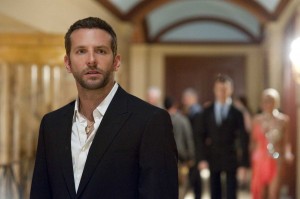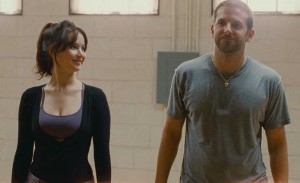
Director David O. Russell’s shooting style proved the biggest challenge to Jay Cassidy when he was editing Silver Linings Playbook. The director worked intensely with the actors, using a process that helped the actors discover and develop their characters on set.
“David shoots completely in his own style,” revealed Cassidy. “He works with the actors in a way few directors I’ve seen work. He works with the actors, standing with them on set, quite close. He’s constantly talking to them – sometimes directing them, sometimes suggesting new readings, new lines in a way certain actors – if they did not understand David and what he was doing – might take offense, but the cast of this film loved it. DeNiro has said, I think publicly, that he hasn’t been pushed like this as long as he can remember.”

For actor Bradley Cooper, there was a process of discovery as to who his character, Pat Solitano, should be and how he should behave after coming out of the hospital. There were various levels of his obsessive-compulsive nature, especially in the first act. Yet despite his flaws, it was important to create a sympathetic character. “As well as a range of coverage, we had a range of performance,” explained Cassidy. “It was really a matter of figuring out how to play Pat in a way that doesn’t leave the audience to think ‘send him back, this guy’s too nuts.’ In his quest to get his wife back and put his live back together, he’s like Don Quixote. You kind of feel for him.”
This style of working out the performances on set provided enough range in the dailies that the film could be re-calibrated to “fit the character” in the editing room. “We did many versions of many scenes because we wanted to shift something, usually for good reason,” said Cassidy. “I would also say that the first act of the film was harder to do than the second and third act, because they more or less shot the film in continuity. As they progressed, Bradley honed in on knowing who Pat was.”

The set was lit to allow for shooting 360 degrees, usually using a handheld camera or steadicam. Very long runs of the camera were shot, with repeated resets, so the actors never got a break and spent very little time in their trailers. Because of the way he moved the camera, Russell would shoot the coverage in one direction and without even stopping shoot the coverage in the other. Sometimes a line or even the order of a scene would change when the coverage was shot in the second direction, so the director would then go back and reshoot the first direction.
“It makes for a very free form set of material in the dailies,” Cassidy explained. This method creates a large amount of footage. The assembly took a long time because the editor had to look through everything. Pieces of scenes weren’t always in an obvious place. “That was where the real work was,” Cassidy added. “We would transcribe whole takes that had a lot of improvisation. I couldn’t have worked without Avid‘s script tool. That was the only way we could find those improvisations.”
Nevertheless, the audible on-set direction captured in the dailies provided the editor with insights as to what the director was thinking, including his performance preferences and the reasoning behind changes and adjustments. “I had never met David until he came back from Philadelphia after he shot the film, but I felt like I knew him because I sat there for eight weeks listening to him, hour after hour.”





